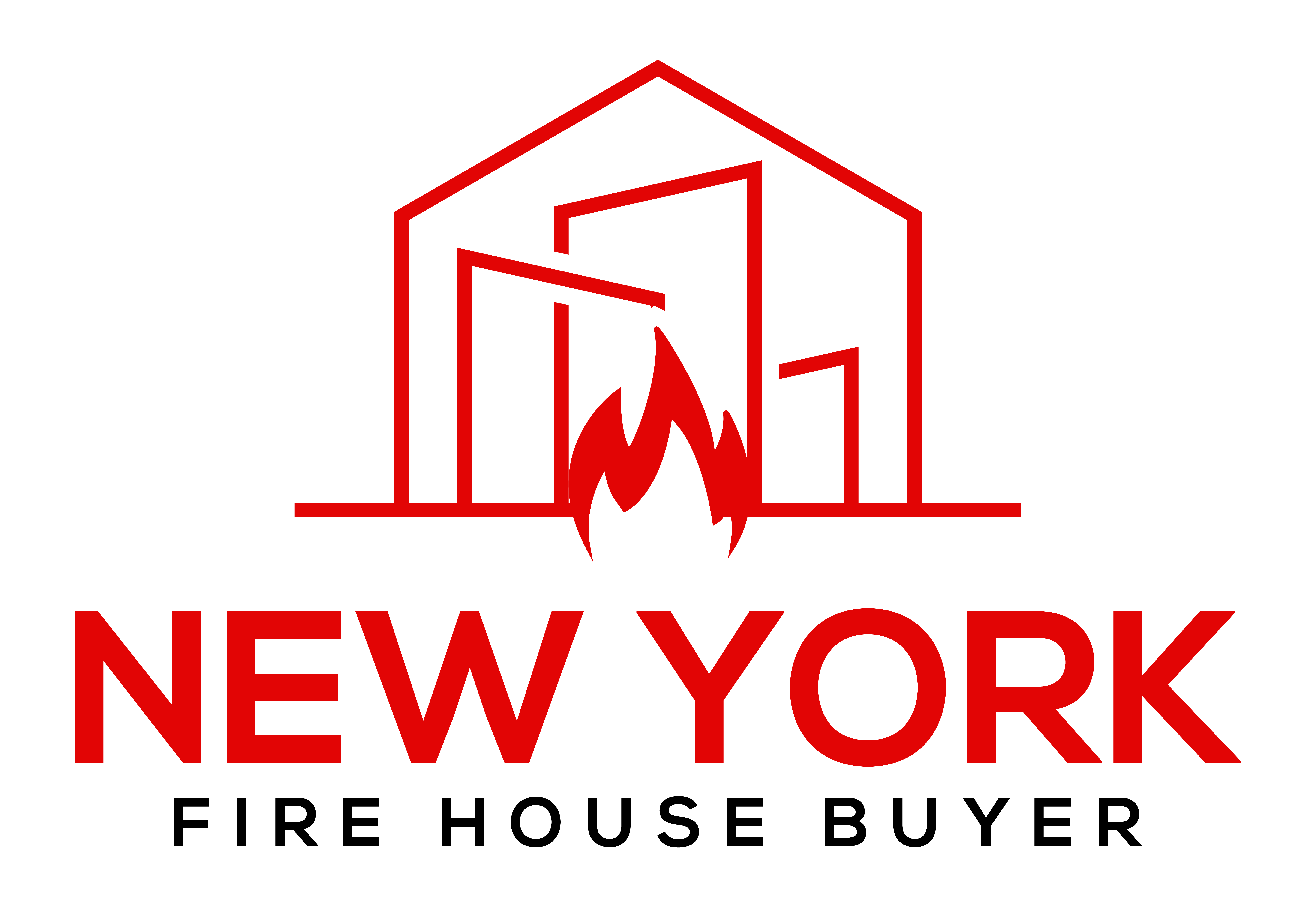Selling A House With Fire-Damaged In Buffalo
I buy fire damaged houses in Buffalo cash as is, get a fair offer today


We’ll Give You A No Pressure As-Is Cash Offer in 24 Hours
We’re Local, Can Close in 10 Days, Fast Cash




How To Sell A Fire Damaged House As Is In Buffalo
Ready to sell your Buffalo, NY home as-is? Whether you’re in Elmwood Village, North Buffalo, Allentown, South Buffalo, or the West Side, we offer a simple 3-step process: no agents, a free cash offer, and closing in as little as 7 days. For a fast, local sale in any Buffalo neighborhood, contact Sell Fire Damaged House Buffalo today!



Fill Out Form
Fill out our form and we’ll get started on your free offer! No obligations.



Receive Cash Offer
We’ll research your property and call you with our fair offer in cash!


You Get Paid!
Money in your bank account at closing. As quick as 7 days!
Sell Your House Fast After a Fire
Selling your fire-damaged home in Buffalo, NY? Whether you’re in Elmwood Village, Allentown, North Park, South Buffalo, or the West Side, our simple process makes it easy to move on fast—no hassle, no stress.
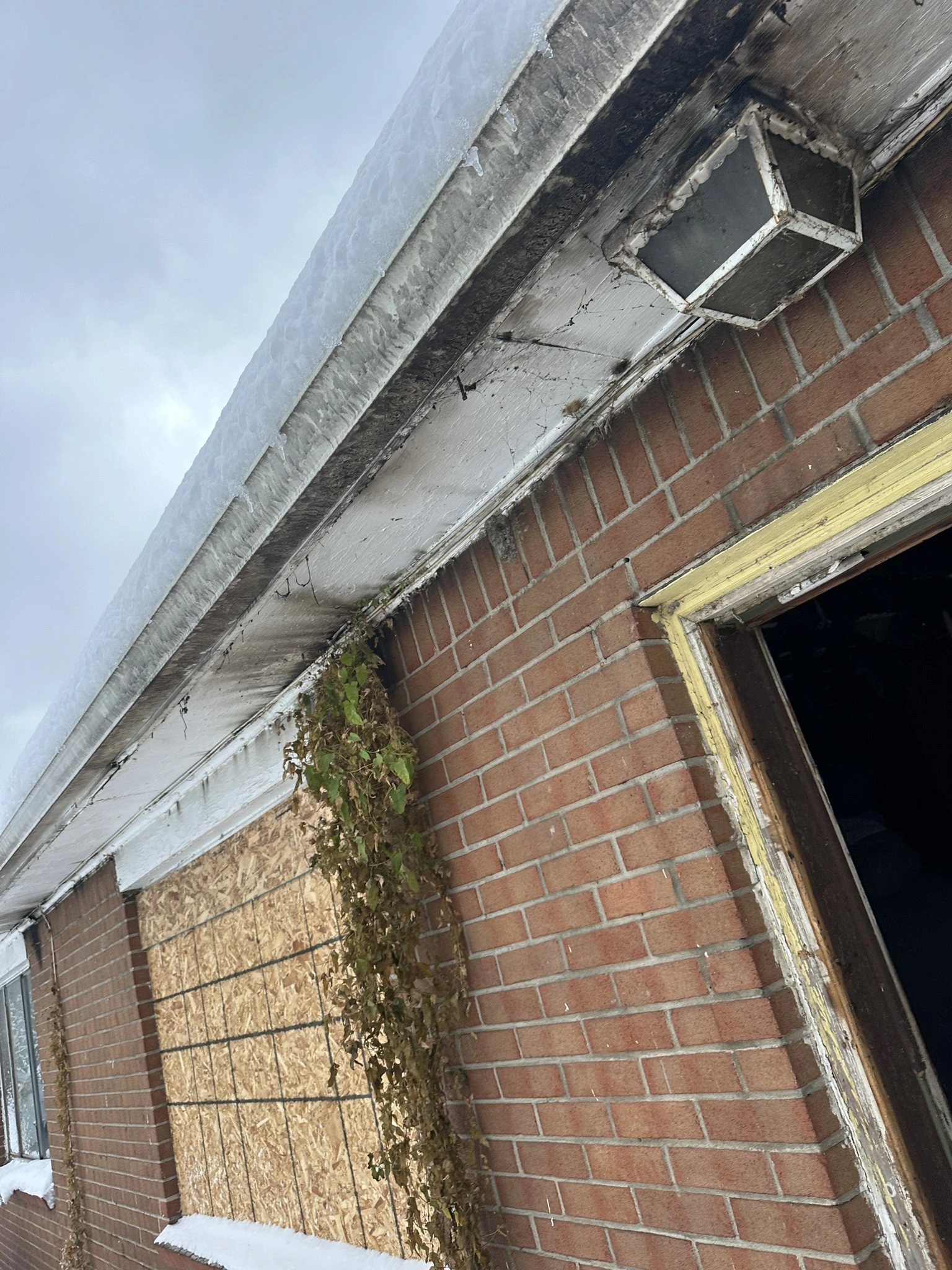
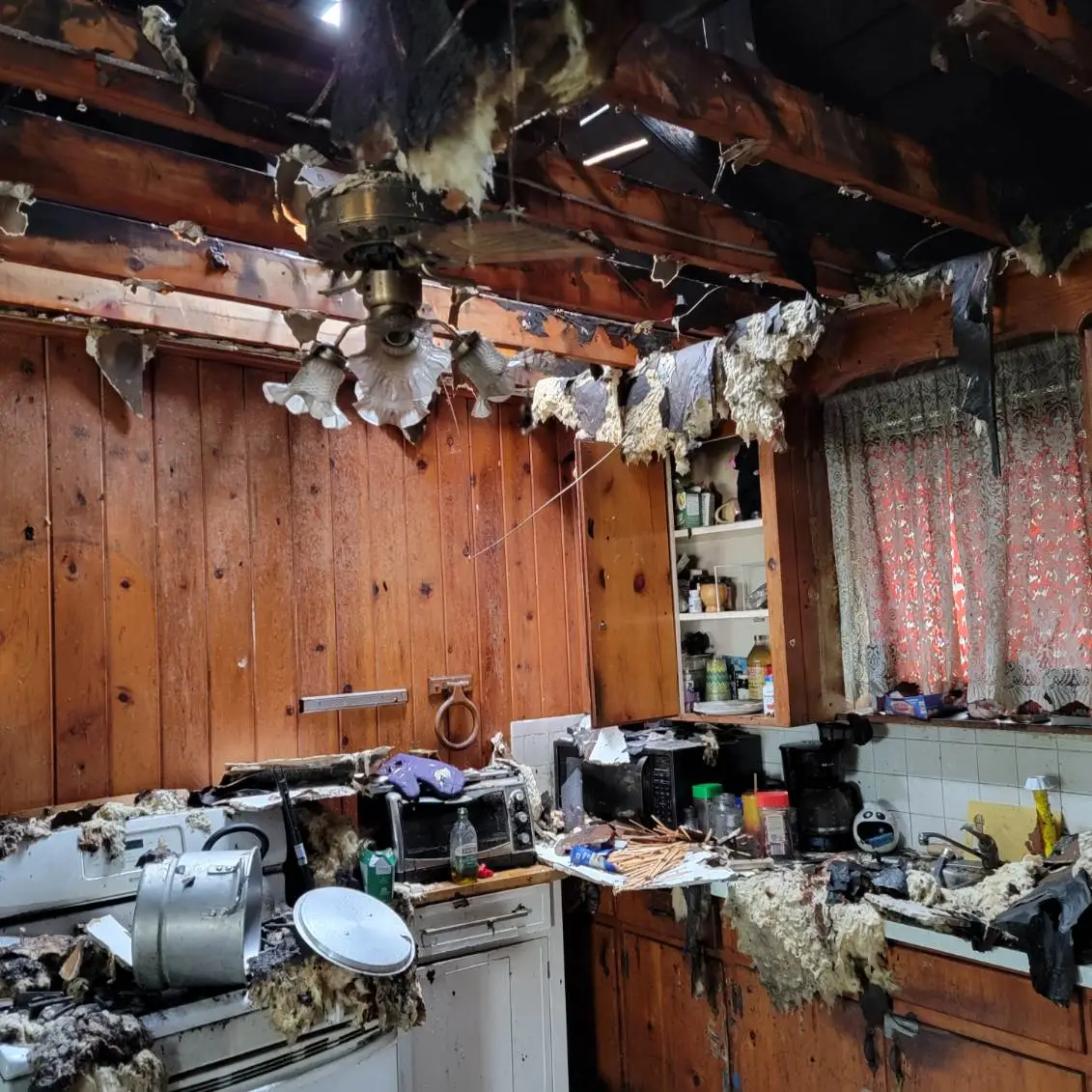
How To Sell A Burned Down Fire Damaged House In NY
- We Buy Fire Damaged Homes
- Selling a fire-damaged house in Buffalo requires weighing the pros and cons of various options, such as selling as-is or repair and listing.
- It is important to consult a fire damage restoration contractor to properly assess the damage and estimate repair costs in order to accurately price a house with fire damage.
- In Buffalo, it is recommended to disclose fire damage when selling your property to avoid potential legal disputes and financial liabilities. If you’re looking to sell fire damage house, understanding disclosure requirements is essential.
We Buy Fire Damaged Homes As Is
We buy homes as-is across Buffalo, NY—including Elmwood Village, North Buffalo, South Buffalo, and the West Side. No repairs, showings, or realtor needed. Whether you’re dealing with financial stress, probate, or just want a fast, hassle-free sale, we make it easy in any Buffalo neighborhood.
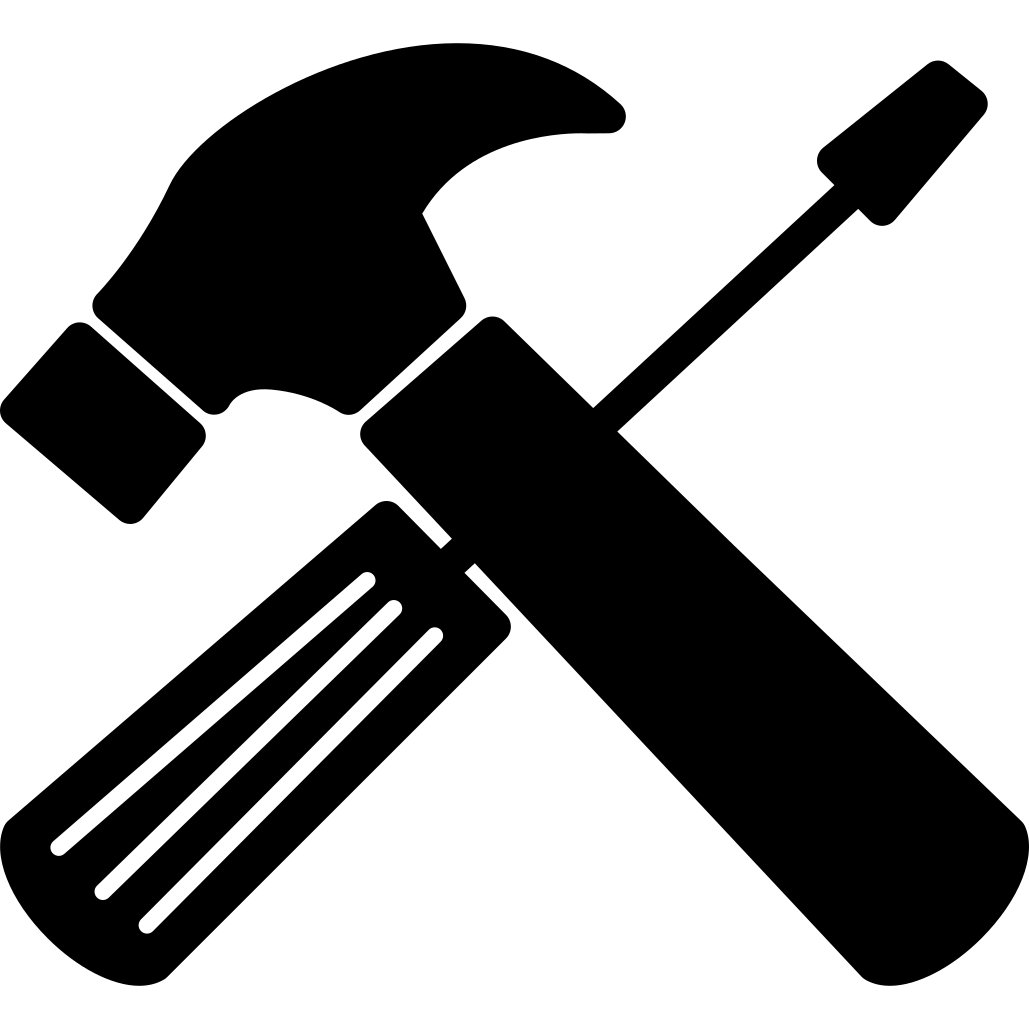
No Home Repairs
Selling your house as is means we take care of all the hassles!

No Agents
Skip paying for agent commission. We make home sales simple!

No Fees
Not only do we have NO agent or iBuyer fees, we cover closing costs!

Fast Closing
Sell your home in 7 days or on your timeline! We buy homes fast.

No Obligations
Take it or leave it. Our free cash offers come with no obligations.

Hassle Free
No agents. No inspection. No delays. We buy real estate as-is for cash!
Can I Sell A Fire-Damaged House In Buffalo?
Although selling a fire-damaged house in Buffalo is possible, it comes with its own set of challenges. The market value of the property is likely to be affected by the damage caused by the fire. This means that selling at a desirable price may be difficult. Additionally, potential buyers may be more inquisitive and cautious when considering such properties.
When selling your fire-damaged house in Buffalo, you can either restore it or sell it as-is. If you decide to restore the property, you may face high repair costs and a lengthy rebuilding process. On the other hand, selling as-is can save you time and money, but may result in a lower selling price. Regardless of your decision, honesty about the damage and required repairs is critical.
Sell Fire Damaged House Buffalo!
If a simple home sale that closes on your schedule sounds like what you need, come check us out. You can request a free quote for your house by filling out our form below!
We’ll Give You A No Pressure As-Is Cash Offer in 24 Hours
We’re Local, Can Close in 10 Days, Fast Cash
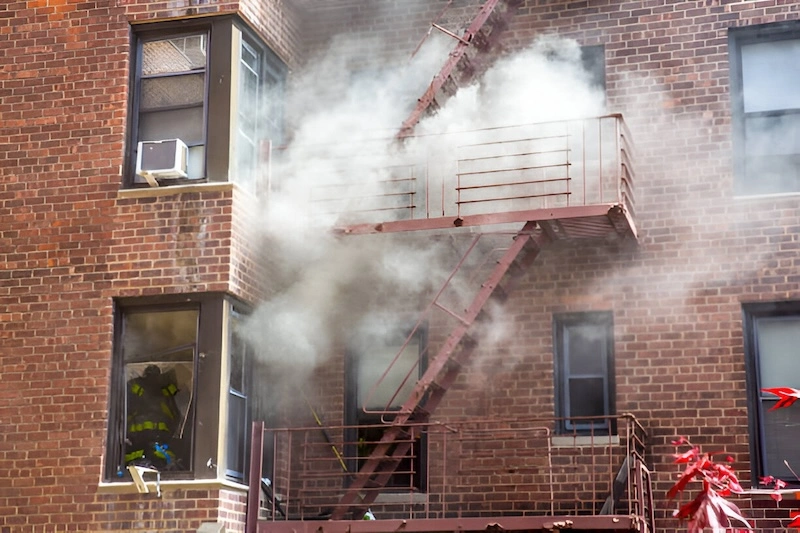
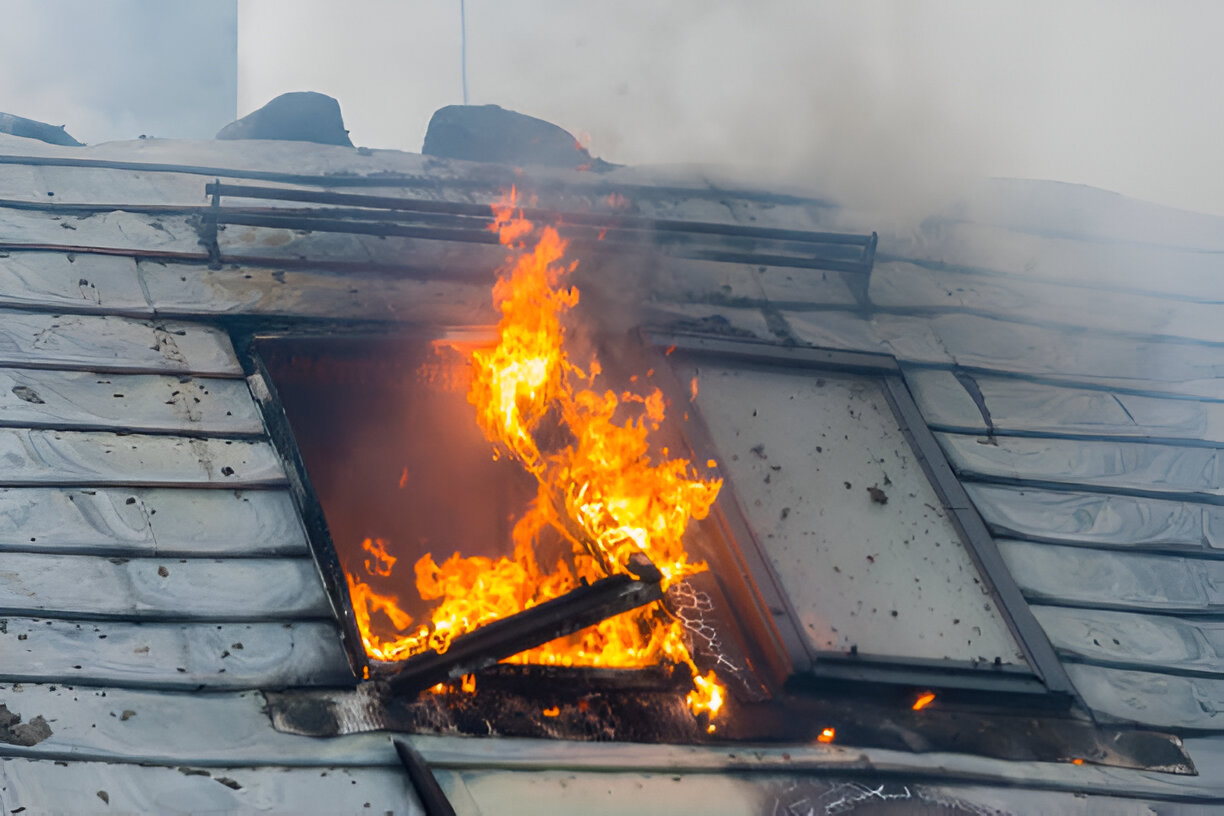
The Buffalo Fire Department (BFD) is responsible for providing fire protection and emergency medical services to the city of Buffalo, New York. It serves a population of approximately 278,349 people across a geographic area of 40.38 square miles. The department operates under the motto “Ut Vivant Alii” (So Others May Live).
The Buffalo Fire Department operates out of 19 fire stations, each equipped with various apparatus to handle different types of emergencies.
The department has 19 engines, 9 trucks (all tower ladders except Ladder 15), 1 rescue unit, 1 HAZMAT unit, 1 fireboat, and 1 light and air unit.
The Buffalo Fire Department is organized into 1 division and 4 battalions. Each battalion is responsible for a specific area of the city:
- Battalion 3: Covers the central part of the city.
- Battalion 4: Covers the west side of the city.
- Battalion 6: Covers the south side of the city.
- Battalion 7: Covers the northeast side of the city.
The department also provides emergency medical services (EMS) as part of its operations.
For non-emergency inquiries, the main phone number is 716-851-5333. For emergencies, residents should call 911. The department’s headquarters is located at 195 Court Street, Buffalo, NY 14202.
Fire restoration costs in Buffalo, NY, can vary significantly based on several factors, including the extent of the damage, the size of the home, and the type of fire. Here are some general estimates:
- Average Cost Per Square Foot: Fire damage restoration typically costs between $4 to $7 per square foot. For a 2,600-square-foot home, this could translate to approximately $10,400 to $18,200.
- Total Restoration Costs: The national average cost for fire damage restoration is around $20,470, with a range from $2,900 to $38,325. In Buffalo, costs might be similar, depending on the specific circumstances of the fire.
- Specific Services:
- Soot and Smoke Damage: $2,000 to $6,000.
- Water Damage: $1,000 to $4,000.
- Duct Cleaning: $200 to $500.
- Local Services: Companies like Rapid Dry Services in Buffalo offer comprehensive fire damage restoration services, including emergency response, cleanup, and rebuilding. They provide free estimates and upfront pricing.
The cost to build a new construction home in Buffalo, New York, varies based on several factors, including the grade of construction and the specific features of the home. Here is a breakdown of the estimated costs:
Cost Per Square Foot
- Standard Grade Construction: $100 to $130 per square foot.
- Premium Grade Construction: $130 to $190 per square foot.
- Luxury Grade Construction: $170 to $210 per square foot.
Total Cost for a Home
For a typical home size of about 1,700 square feet, the average cost to build in Buffalo is approximately $200,600. However, this figure can vary significantly based on the construction grade and other factors.
Additional Costs
- Land and Sitework: These costs are not included in the per-square-foot estimates and can vary widely depending on the location and condition of the land.
- Permits and Inspections: Additional costs for building permits and inspections will apply.
The real estate market in Buffalo, New York, is currently thriving, with significant growth and high demand. Here are some key trends and factors influencing the market:
Market Trends and Projections
- Hottest Market in 2025: Buffalo has been named the hottest housing market in the U.S. for 2025 by Zillow, marking the second consecutive year it has held this title.
- Home Value Appreciation: Zillow projects a 3% increase in home values for 2025, following a 6% jump in 2024. However, some reports suggest a slightly lower appreciation rate of 2.8% for 2025.
- Median Home Prices: The median home price in Buffalo was around $239,165 in December 2024 and rose to $240,000 by February 2025.
Driving Factors
- Job Growth vs. Housing Supply: Buffalo has a high ratio of new jobs to new homes built, leading to intense competition among buyers.
- Affordability: Despite rising prices, Buffalo remains relatively affordable compared to other major U.S. cities, with home prices significantly below the national average.
- Economic Growth: The city’s economy is robust, with sectors like healthcare, education, and technology driving job growth and housing demand.
Challenges and Outlook
- Limited Housing Inventory: The supply of homes for sale is limited, contributing to price increases and a competitive market.
- Construction Challenges: Builders are struggling to keep pace with demand, which could moderate price growth if addressed.
- Future Outlook: While prices are expected to continue rising in the short term, the market may moderate as construction catches up with demand and interest rates stabilize.
Buffalo, New York, offers a diverse range of attractions that cater to various interests. Here are some well-known city attractions:
Cultural and Historical Attractions
- Buffalo City Hall: An Art Deco landmark with an observation deck offering panoramic views of Lake Erie. Guided tours are available.
- Theodore Roosevelt Inaugural National Historic Site: Commemorates the site where Theodore Roosevelt took the oath of office in 1901.
- Buffalo AKG Art Museum: Features modern and contemporary art, including works by Picasso and Warhol.
Natural and Outdoor Attractions
- Buffalo Zoo: The third-oldest zoo in the U.S., home to polar bears, gorillas, and other wildlife.
- Canalside Buffalo: A vibrant waterfront area hosting numerous events and offering activities like kayaking and ice skating.
- Delaware Park: Offers walking trails, picnic areas, and sports facilities within the city.
Educational Attractions
- Buffalo Museum of Science: Focuses on natural history with interactive exhibits suitable for families.
- Buffalo Transportation Pierce Arrow Museum: Showcases vintage vehicles and transportation history.
Iconic Landmarks
- The Electric Tower: Known for hosting Buffalo’s New Year’s Eve ball drop.
- Darwin D. Martin House: A Frank Lloyd Wright-designed house offering guided tours.
Nearby Attractions
- Niagara Falls: A major natural wonder located just a short drive from Buffalo, offering stunning views and activities.
Buffalo, New York, is a city with a diverse range of neighborhoods, each offering unique characteristics and attractions. Here are some of the notable neighborhoods in Buffalo:
- Allentown: Known for its vibrant nightlife, trendy restaurants, and artistic vibe. It’s a hub for Buffalo’s arts community and features colorful homes and murals.
- Elmwood Village: A popular neighborhood with a mix of shops, restaurants, and cultural events. It’s recognized for its pedestrian-friendly environment and local boutiques.
- Parkside: Located next to Delaware Park, this neighborhood is famous for its beautiful Victorian homes and the Darwin Martin House, a Frank Lloyd Wright masterpiece.
- North Buffalo: A residential area with a quieter atmosphere, featuring Hertel Avenue, which offers dining and shopping options.
- West Side: Known for its cultural diversity, with a mix of immigrant communities and a vibrant food scene, including the West Side Bazaar.
- Downtown Buffalo: Revitalized with new developments, offering a big city feel with entertainment options like the Buffalo Sabres and Bisons stadiums.
- Larkinville: A historic neighborhood with a lively atmosphere, especially during summer events like Food Truck Tuesdays.
- Black Rock: A dense residential area with a rich history and a lively music scene.
- Lower West Side: An up-and-coming neighborhood with a mix of cultures and affordable housing options.
- University Heights: Known for its educational institutions and diverse community.
- South Buffalo: A neighborhood with a strong sense of community and historical significance.
- Old First Ward: One of Buffalo’s oldest neighborhoods, now featuring breweries and outdoor activities.
Sell My Fire-Damaged House in Buffalo
Fire damage can transform a cherished Buffalo home into a source of stress and uncertainty overnight. The charred remains and lingering smoke damage leave many property owners wondering if selling is even possible.
The good news is that Buffalo’s diverse real estate market offers multiple pathways for homeowners looking to sell fire-damaged properties, from specialized cash buyers to traditional market listings.
The journey from fire damage to successful sale requires careful navigation of insurance claims, property assessments, and Buffalo’s specific legal requirements. Understanding your options – whether working with investors who purchase damaged properties or pursuing full restoration before listing – can significantly impact your final selling price and timeline.
Local market conditions and property characteristics play crucial roles in determining the best approach for your situation. Manhattan’s luxury market demands different strategies than suburban properties in Buffalo or Rochester.
By weighing factors like repair costs against potential returns and understanding buyer expectations in your area, you can make informed decisions about investing in repairs or selling as-is.
The path forward involves practical steps like documenting damage, working with insurance adjusters, and choosing qualified professionals to assess your property’s condition.
Buffalo’s robust real estate network includes specialists who understand the unique challenges of marketing and selling fire-damaged properties, ensuring you have support throughout the process.
Immediate Steps After Fire Damage
I’ve helped numerous Buffalo homeowners handle the challenging aftermath of fire damage, and I can tell you firsthand that quick, strategic action makes all the difference. Let’s walk through the essential steps you’ll need to take to protect both your safety and your property’s future value.
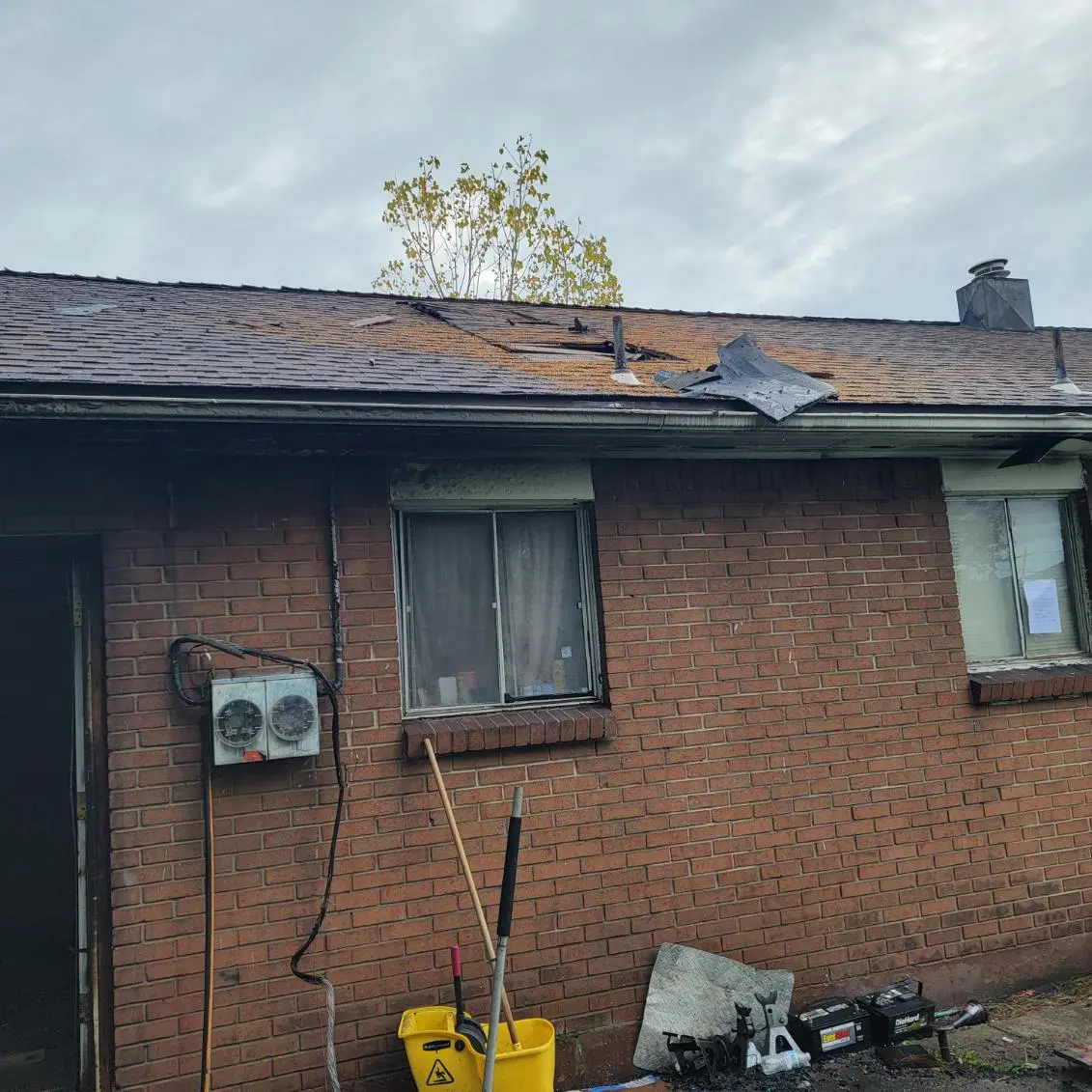
Safety and Documentation Protocol
Your safety comes first – always obtain written clearance from the fire department before stepping foot on your property. Once you’re cleared to enter, grab your smartphone or camera and start documenting everything.
I recommend taking both photos and videos of all damaged areas, being as thorough as possible. Trust me, this visual record will be your best friend during insurance claims and potential buyer discussions.
- Take close-up and wide-angle shots of all the damage
- Document every room, even those with minimal damage
- Create a detailed inventory of damaged items
- Gather and secure crucial documents like:
- Property deeds
- Insurance papers
- Mortgage documents
- Property tax records
Insurance Claims Process
Don’t wait – contact your insurance provider right away. I’ve seen how crucial those first 24-48 hours can be in the claims process. Your insurance company will assign an adjuster to evaluate the damage and determine your coverage.
Keep a dedicated notebook or digital file for:
• Claim numbers
• Adjuster contact information
• Conversation logs and summaries
• Email correspondence
• Photos shared with the insurance company
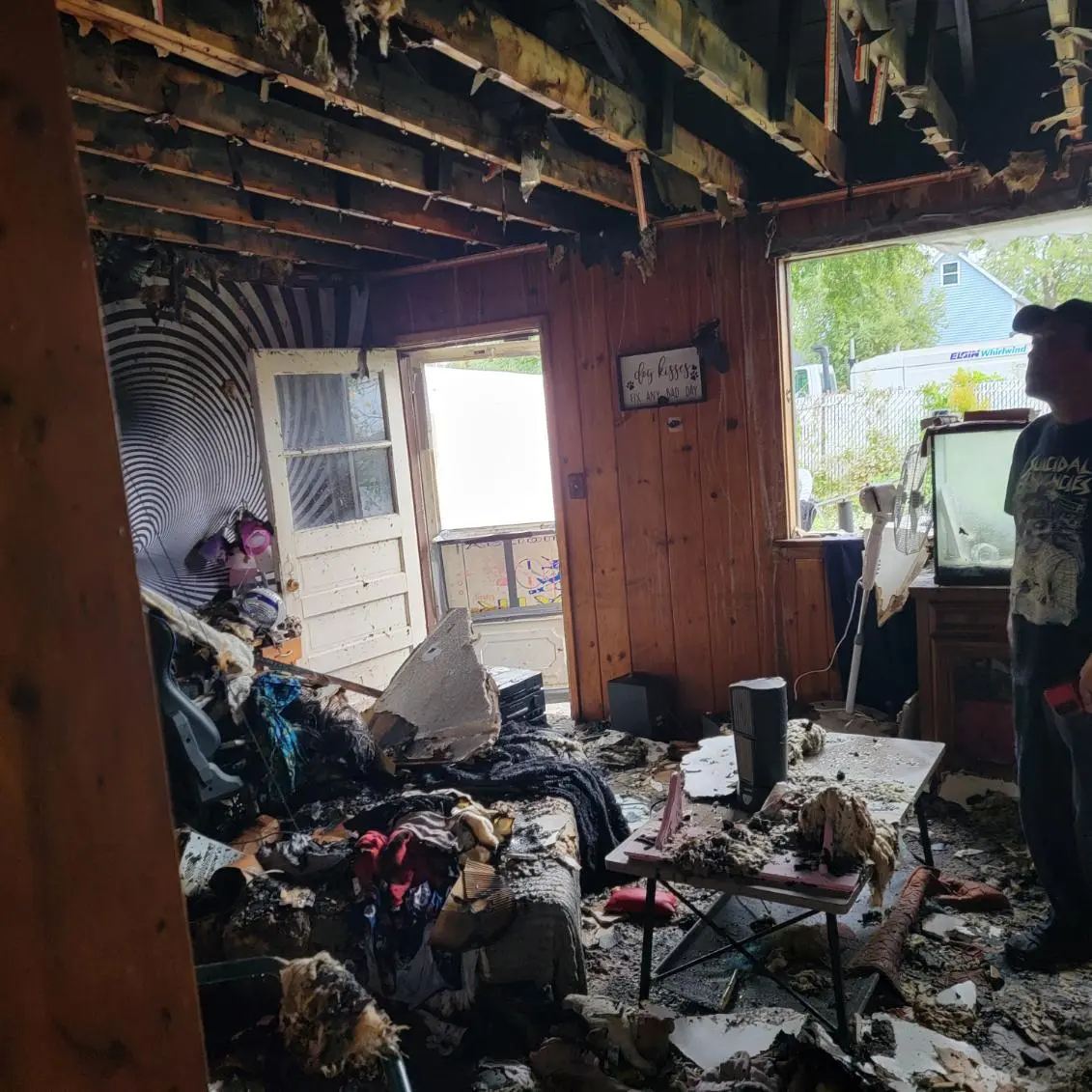
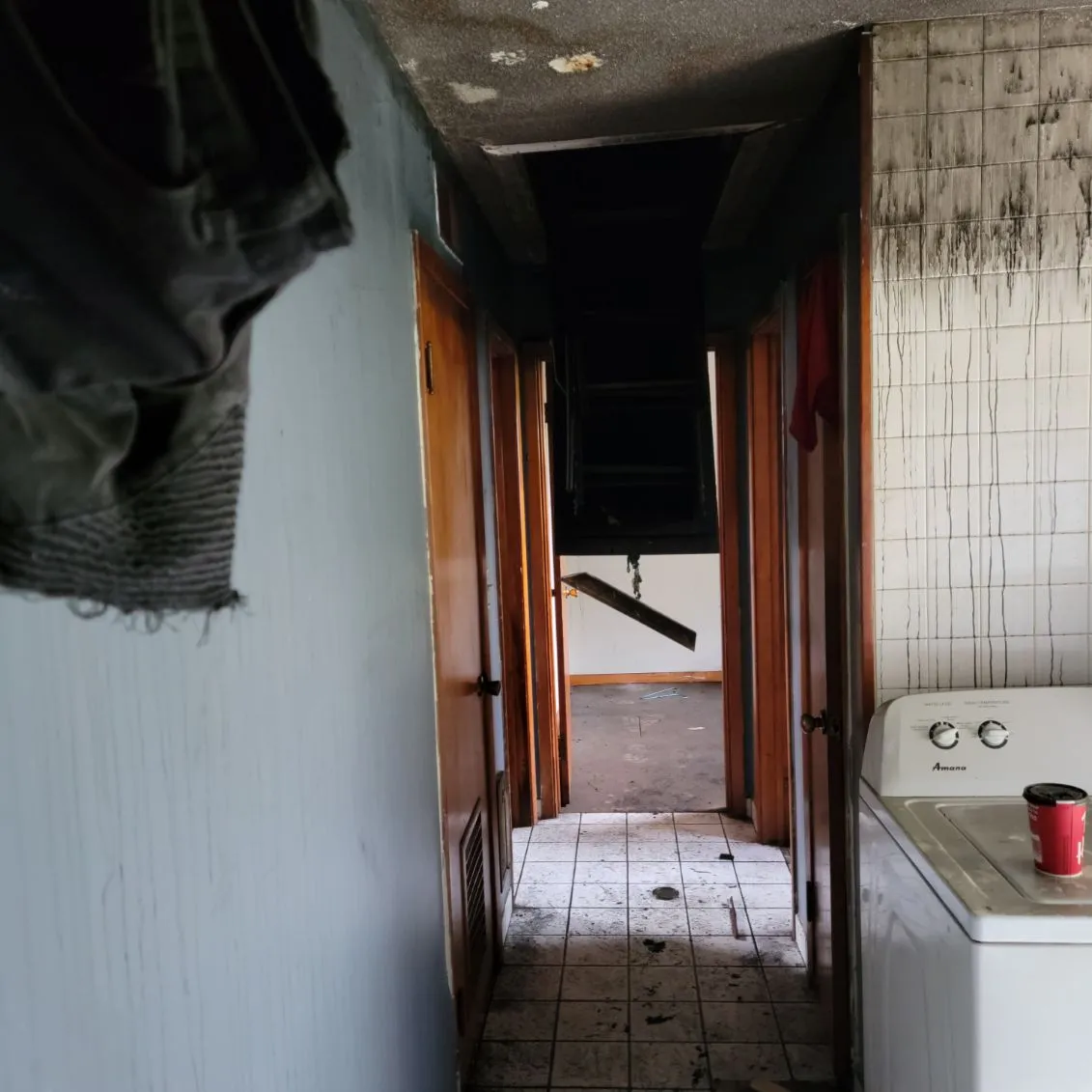
Temporary Living Arrangements
Finding a safe temporary home is crucial while you sort out your property situation. Your insurance policy likely includes temporary housing coverage – something many homeowners don’t realize until they need it.
Important considerations for temporary housing:
• Location relative to work/school
• Duration of stay needed
• Pet-friendly accommodations if necessary
• Cost coverage limits from insurance
Remember to save every receipt related to your displacement. These expenses often qualify for insurance reimbursement and will factor into your overall financial planning.
Professional Damage Assessment
Having worked with numerous fire-damaged properties, I can’t stress enough the importance of hiring certified professionals for a thorough evaluation. A complete assessment should cover:
- Structural integrity analysis
- Electrical system inspection
- Plumbing system evaluation
- Hidden damage assessment:
- Smoke damage behind walls
- Water damage from firefighting efforts
- Foundation concerns
- Air quality issues
This professional evaluation serves two crucial purposes: it gives you a clear picture of repair costs and provides credible documentation for potential buyers. Whether you decide to restore the property or sell it as-is, this detailed assessment will be invaluable for making informed decisions about your property’s future.
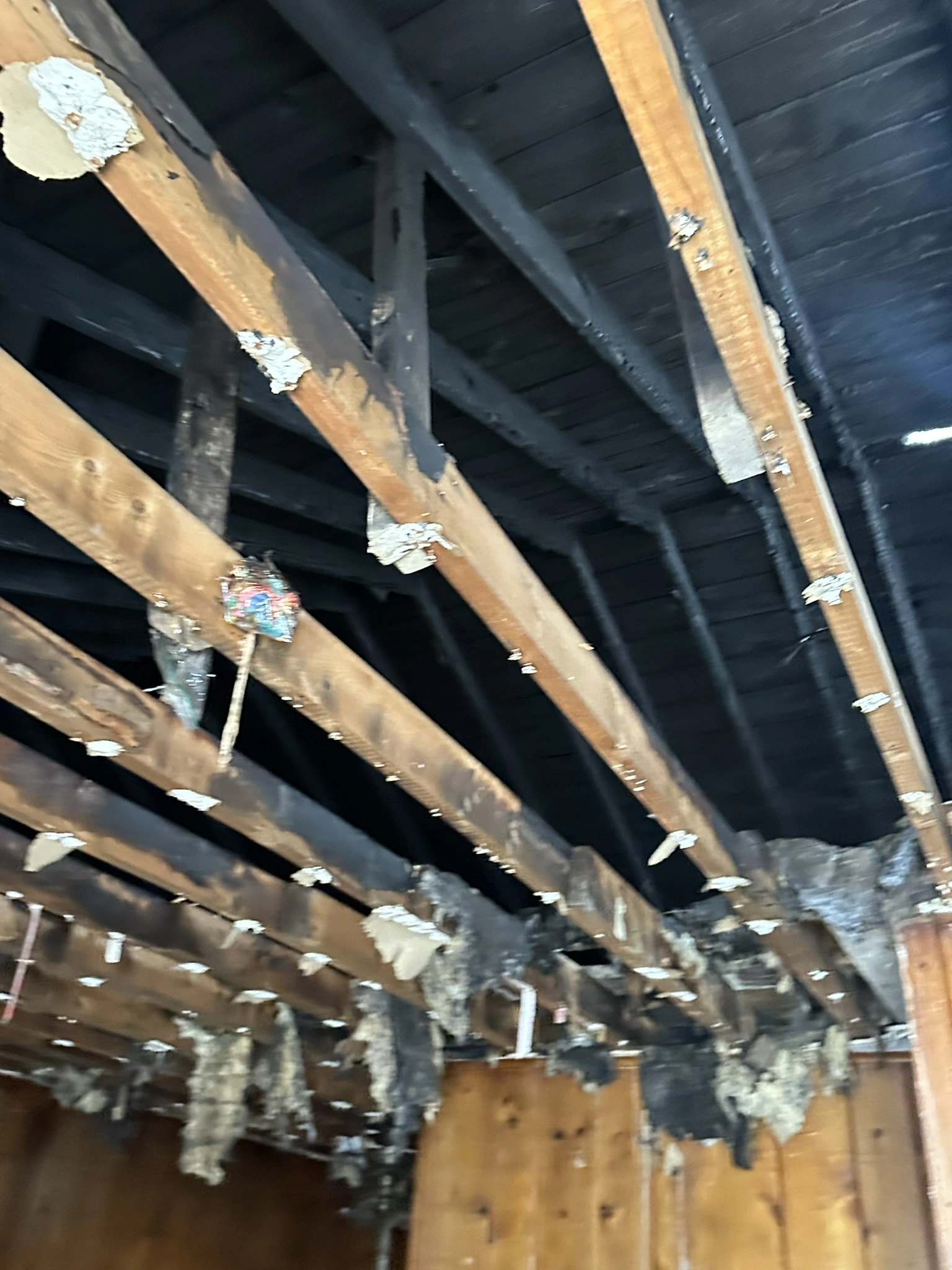
Your Selling Options In Buffalo
Dealing with a fire-damaged house in Buffalo can feel overwhelming, but I’ve helped many homeowners explore their selling paths successfully. Let me walk you through the most effective paths I’ve seen work, based on real experiences in the Buffalo market.

Cash Buyers And Investors
I’ve found that cash buyers and real estate investors often provide the smoothest path forward for fire-damaged properties. Here’s what makes them attractive:
• Closings typically happen within 7-14 days
• No repairs or cleanup required
• Zero closing costs for sellers
• Straightforward paperwork process
• Immediate cash offers
While you might receive less than market value, the convenience and speed often outweigh the price difference, especially when you factor in repair costs and holding expenses.
Traditional Real Estate Market
The conventional real estate market remains a solid choice, particularly if your property has minimal damage. From my experience working with Buffalo properties, this approach works best when:
• The fire damage is cosmetic rather than structural
• You have time to wait for the right buyer
• You’re willing to invest in some repairs
• The local market is particularly strong
• You have an agent experienced with damaged properties
Remember, while this route typically takes longer, Buffalo’s competitive market could help you secure a better final sale price.

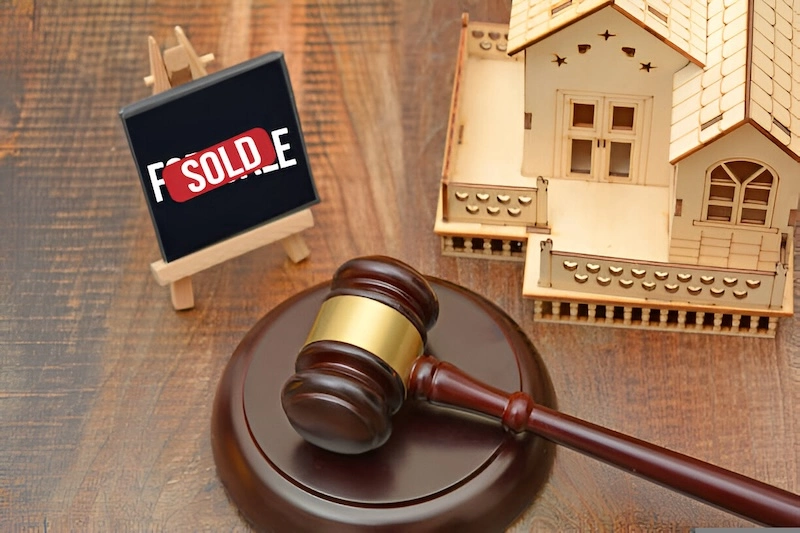
Property Auction Platforms
Online and in-person auctions have revolutionized how we sell damaged properties in Buffalo. These platforms offer unique advantages:
• Quick exposure to multiple potential buyers
• Competitive bidding environment
• Set timeline for sale completion
• Transparent selling process
• No negotiation needed
Just keep in mind that auction sales are final and as-is, with no room for contingencies or second thoughts.
Direct Sale To Restoration Companies
I’ve seen fantastic results when homeowners work directly with restoration companies. These specialists offer a unique combination of benefits:
• Fair market offers based on accurate repair estimates
• Quick closing timelines
• Professional property cleanup included
• Expertise in fire damage assessment
• Streamlined transaction process
Many Buffalo restoration companies have turned this into a smooth, stress-free option for homeowners looking to move forward after fire dam
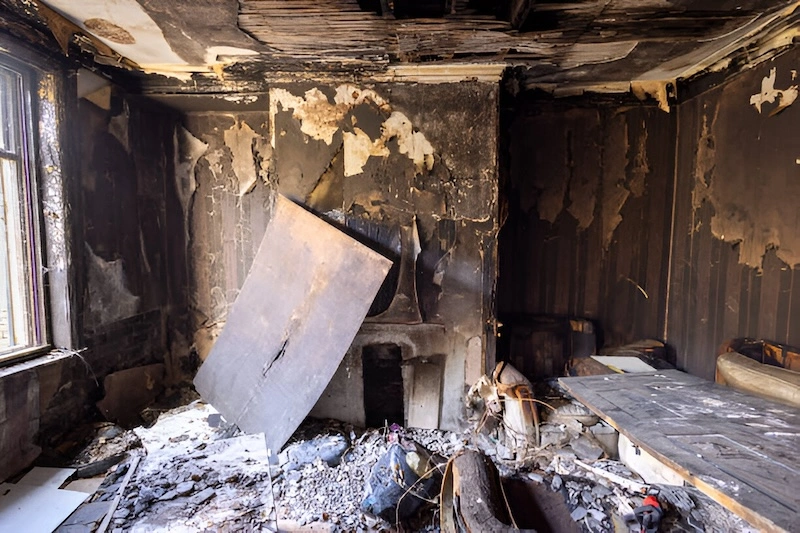
Pricing Your Fire-Damaged Property
Determining the right price for your fire-damaged property in Buffalo requires careful consideration of multiple factors. I’ve helped numerous property owners work through this challenging process, and I’ve found that understanding these key elements helps set realistic expectations while maximizing potential returns.

Current Market Value Factors
Your fire-damaged property’s baseline value starts with its pre-damage worth, adjusted for today’s market conditions. Here’s what matters most:
• Location-specific comparable sales
• Property size and original features
• Current neighborhood demand
• Seasonal market fluctuations
Even with significant fire damage, these fundamental market factors still influence your primary property value. I’ve seen properties in prime Buffalo locations maintain substantial value despite severe damage.
Cost Of Repairs Assessment
Getting a professional assessment of repair costs is absolutely crucial for accurate pricing. Here’s what a thorough evaluation should include:
• Detailed structural damage reports
• Itemized renovation costs
• Required permit expenses
• Timeline estimates for repairs
Having worked with numerous restoration experts, I’ve learned that potential buyers (especially investors) calculate beyond just repair costs. They factor in:
• Monthly carrying costs during renovation
• Potential construction complications
• Insurance requirements
• Code compliance updates


Location Impact In Buffalo
Your property’s location within Buffalo remains a powerful value driver, even in a damaged state. I’ve noticed that properties in high-demand areas often retain 60-70% of their value despite significant damage. Key location factors include:
• Public transportation accessibility
• School district ratings
• Neighborhood development plans
• Local market appreciation trends
These location advantages can significantly boost your property’s appeal to potential buyers, particularly those who recognize long-term value potential.
Negotiation Strategies
Successful negotiations require a comprehensive understanding of both your property’s value and buyer psychology. From my experience, the most effective approach includes:
• Maintaining detailed documentation of all assessments
• Creating a clear pricing range with flexibility
• Highlighting post-renovation potential value
• Understanding different buyer motivations
When dealing with investors or cash buyers, focus conversations on the property’s future potential rather than current condition. I’ve found that having solid data about repair costs and market values helps establish credibility during negotiations and often leads to better offers.

Legal Requirements For Buffalo Sellers
Exploring the legal environment of selling a fire-damaged property in Buffalo can feel overwhelming, but I’ve helped many property owners through this process. Let me break down the essential requirements you’ll need to handle for a smooth, legally compliant sale.

Property Disclosure Laws
As a seller in Buffalo, you have two main options for property disclosure:
Provide a detailed Property Condition Disclosure Statement that includes:
• Complete information about the fire incident
• The extent of the damage
• All repairs and remediation work completed
• Current property condition
Alternatively, you can opt for a $500 credit to the buyer at closing, which many sellers of damaged properties choose for simplicity.
Remember, honesty is your best protection here. I’ve seen cases where minimizing damage led to costly legal battles, while transparent disclosure actually helped build buyer trust.
Required Documentation
Your documentation checklist should include:
- Fire-related documents:
- Original fire incident report
- Insurance claim paperwork
- Repair and remediation records
- Professional assessments:
- Inspector reports
- Contractor estimates
- Completion certificates
- Safety verifications:
- Current certificates of occupancy
- Building inspection reports
- Safety compliance documents
Keep these records organized and readily accessible – they’re your proof of proper handling and will streamline the sale process.

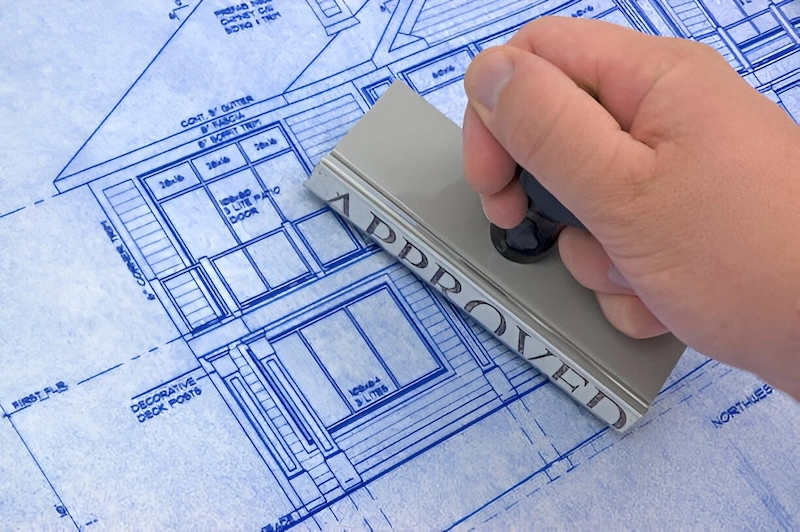
Permit Requirements
Buffalo’s permit requirements vary by locality, but generally include:
• Structural repair permits
• Major renovation approvals
• Safety inspection certificates
• Building department clearances
Even when selling “as-is,” you’ll likely need basic safety permits. I’ve found that working proactively with local building departments helps avoid last-minute complications and demonstrates your commitment to compliance.
Insurance Considerations
Smart insurance management is crucial for fire-damaged property sales. Key aspects include:
- Documentation needs:
- Detailed claim records
- Settlement information
- Repair payment history
- Coverage requirements:
- Maintaining appropriate insurance during the sale
- Understanding coverage limitations
- Documenting transferable warranty information
Consider scheduling a consultation with an insurance professional to review your coverage needs during the sale period. They can help ensure you’re protected until the transaction closes while providing valuable documentation for potential buyers.
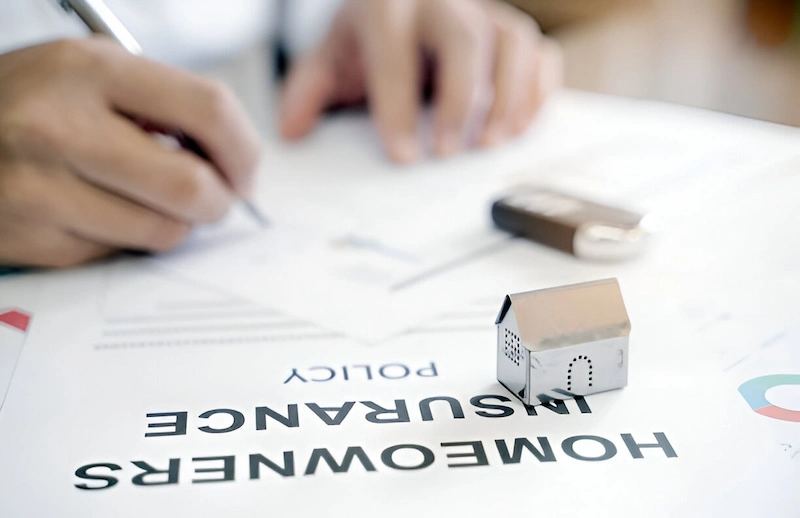
Repair Vs. As-Is Sale Analysis
I’ve helped numerous homeowners explore this challenging decision, and I can tell you that choosing between repairing a fire-damaged house or selling it as-is in Buffalo is one of the most significant decisions you’ll make. Let me walk you through the key factors that will help you make the best choice for your situation.

Cost-Benefit Comparison
When I analyze repair costs with my clients, we typically break them down into these essential categories:
• Structural repairs and reinforcement
• Complete electrical system overhaul
• Professional smoke damage remediation
• Interior and exterior cosmetic improvements
While investing in these repairs can boost your property’s value and attract traditional buyers, I’ve seen many sellers successfully go the as-is route.
As-is sales eliminate repair headaches and often attract motivated cash buyers and investors who love taking on renovation projects. Yes, you’ll likely get a lower price, but the trade-off might be worth it when you consider the bigger picture.
Timeline Considerations
Let me be straight with you about timing. In Buffalo’s construction market, I’ve watched repair projects stretch from weeks into months. Here’s a realistic breakdown:
• Permit acquisition: 2-4 weeks
• Contractor selection and scheduling: 1-3 weeks
• Major repairs: 2-6 months
• Inspections and certificates: 2-4 weeks
On the flip side, I’ve helped clients complete as-is sales in as little as 2-3 weeks when working with experienced investors who specialize in fire-damaged properties. The speed difference can be dramatic.


Market Response To Each Option
The Buffalo real estate market fascinates me with its distinct buyer pools. I’ve noticed that fully restored homes naturally attract:
•Traditional families seeking move-in ready homes
• Buyers with conventional mortgage options
• Particular buyers willing to pay premium prices
Meanwhile, as-is properties draw a different crowd:
• Professional investors
• Renovation specialists
• House flippers with ready cash
• Contractors looking for their next project
Return On Investment Potential
From my experience analyzing hundreds of properties, successful ROI calculation requires examining:
• Current Buffalo market trends
• Recent comparable sales in your neighborhood
• Total repair costs and timeline
• Holding costs (taxes, insurance, utilities)
• Potential final sale price for both scenarios
While a fully repaired home might fetch top dollar, I’ve seen many sellers actually come out ahead with as-is sales once they factor in the avoided costs, faster timeline, and immediate cash availability. Remember, every month of holding costs eats into your potential profits, so speed can sometimes be your best friend in maximizing returns.

Navigating The Sale Process
I’ve helped numerous homeowners through the challenging process of selling fire-damaged houses in Buffalo, and I can tell you that success lies in taking a strategic approach. Let me share what I’ve learned about making these sales work, even in tough situations.

Finding Qualified Buyers
Finding the right buyer for your fire-damaged property doesn’t have to be overwhelming. In my experience, these types of properties attract two main groups:
1. Professional investors and cash buyers who specialize in damaged properties
2. Renovation specialists looking for their next project
These buyers typically bring three key advantages to the table:
• Quick, hassle-free transactions
• Experience with fire-damaged properties
• Understanding of the restoration process
I’ve found that working with real estate agents who specialize in distressed properties can be incredibly helpful. They often maintain networks of serious buyers and know exactly who might be interested in your property.
Marketing Strategies
In marketing a fire-damaged property, I consistently prioritize honesty while highlighting potential. Here’s what works:
• Focus on valuable features that survived the fire
• Showcase the property’s location and lot size
• Highlight unique architectural elements
Professional photography can make a huge difference. I’ve seen properties sell faster when listing photos that focus on possibility rather than damage. Create a detailed documentation package including:
• Professional damage assessments
• Repair estimates
• Property history and features
• Neighborhood highlights and amenities


Property Presentation Tips
Even with fire damage, presentation plays a crucial role in attracting buyers. Here’s my checklist for preparing your property:
✓ Secure unstable areas
✓ Remove hazardous materials
✓ Clean up exterior spaces
✓ Clear safe pathways for viewing
Prepare a detailed information package containing:
• Fire department reports
• Insurance claim documentation
• Structural assessments
• Property specifications
Keep communication channels open with your buyer throughout the process. Having a qualified real estate attorney who knows Buffalo law will protect your interests and ensure a smooth transaction. They’ll help steer you through any unique challenges that arise during the closing process.
Frequently Asked Questions
The selling timeline in Buffalo varies significantly based on your approach. I’ve found that cash buyers and investors typically close within 7-30 days, offering the quickest path to sale.
Traditional market sales generally take 2-4 months, especially when repairs are needed or buyers need mortgage approval. Your property’s location, damage severity, and Buffalo’s current real estate market all play crucial roles in determining the final timeline.
Your selling strategy determines the necessary repairs. When working with cash buyers or investors, you can usually skip repairs entirely. For traditional market listings, you’ll need to focus on safety essentials and building code compliance. This typically includes:
• Securing structural components
• Removing fire debris and hazardous materials
• Getting necessary clearances from local building authorities
• Addressing any immediate safety concerns
Absolutely! Many Buffalo investors and cash buyers actually prefer purchasing fire-damaged properties in their current condition.
Having worked with several of these buyers, I can tell you they’re well-versed in restoration work and have the resources to handle extensive repairs. This route offers a hassle-free selling experience without requiring you to invest in costly repairs or renovations.
Fire damage often qualifies you for temporary property tax relief through reassessment. Based on my experience with Buffalo properties, you’ll want to reach out to your local tax assessor’s office promptly to request a damage-based reassessment.
Remember that this tax reduction typically remains in effect only until repairs are completed or the property changes hands.
Key documentation requirements include:
• Fire department incident report
• Professional damage assessment documentation
• Insurance claim records
• Local authority permits and certificates
• Certificate of occupancy (where applicable)
• Safety compliance documentation
Local requirements can vary across Buffalo municipalities, so connecting with experienced real estate professionals in your area helps ensure you’ve gathered all the necessary paperwork for a smooth transaction.
What You Should Do After A House Fire In Buffalo
In the aftermath of a house fire in Buffalo, immediate actions are crucial to address the situation. Here are the steps you should take:
Quick Checklist
1. Contact the fire department for a report.
2. Speak with your insurance company to assess any damage.
3. File an insurance claim.
4. Adhere to legal disclosure requirements when selling a fire-damaged house in Buffalo.
Depending on your decision to repair or sell the fire-damaged house, you will need to:
1. Assess the damage
2. Contact insurance
3. Obtain multiple quotes
4. Budget for unexpected expenses
5. Work with insurance to get your payout
6. Complete repairs
7. List on the market
Collaborating with an adjuster can assist in evaluating damage and repairs and guarantee an equitable settlement when submitting a fire insurance claim.
Sell Your House After A Fire For Cash in Buffalo Today
Selling a fire-damaged house in Buffalo is a manageable challenge with the right strategy and knowledge. Let’s break down your main options:
• Quick Sale: Partner with cash buyers who specialize in purchasing properties as-is, offering a streamlined selling process
• Traditional Market: Invest in repairs and renovations to list your property on the open market for potentially higher returns
Your success depends on carefully evaluating several key factors:
• The extent of fire damage
• Available timeline
• Financial resources
• Current market conditions
• Personal circumstances
Buffalo’s flexible real estate market offers multiple pathways for homeowners with fire-damaged properties. Local investors, restoration companies, and real estate professionals understand these unique situations and can provide valuable guidance.
Remember these essential steps for a successful sale:
1. Document all damage thoroughly
2. Obtain necessary inspections
3. Review insurance coverage
4. Consult with real estate professionals
5. Understand local regulations
I’ve worked with numerous homeowners who’ve successfully sold their fire-damaged properties and moved forward. With proper planning and professional support, you can effectively handle this challenging situation and achieve a favorable outcome. Take that first step today by reaching out to qualified professionals who can guide you through your specific circumstances.
Sell Fire Damaged House Buffalo!
If a simple home sale that closes on your schedule sounds like what you need, come check us out. You can request a free quote for your house by filling out our form below!
We’ll Give You A No Pressure As-Is Cash Offer in 24 Hours
We’re Local, Can Close in 10 Days, Fast Cash
